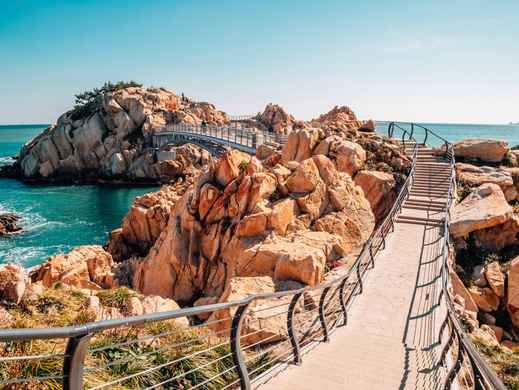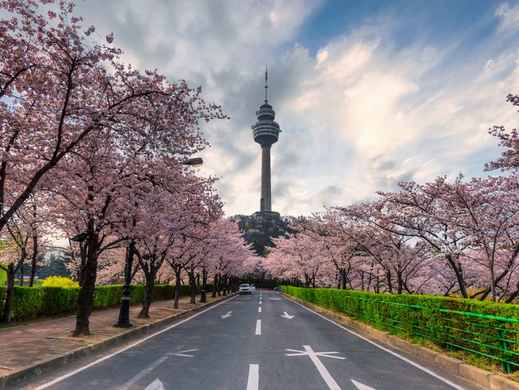


Gyeongju
Asia
/
South Korea
/
Gyeongju
Situated in South Korea's southeast quadrant, within the Gyeongsang province, lies the historic city of Gyeongju. Rich with remnants of the ancient Silla Kingdom, Gyeongju is often coined "the museum without walls." It is a seamless confluence of thousand-year-old temples, royal tombs, modern Korean culture, woven in against a serene backdrop of rolling mountains and tranquil landscapes.
The city's climate is diversified with apparent transformations across the four seasons. Spring showers the city with sprinkles of cherry blossoms, followed by humid summers that are ideal for evening amblings around Anapji Pond. Autumn presents a colorful foliage at the Bulguksa Temple, and winter is crisp and fairly dry. The essence of life here gravitates towards respecting the heritage while comfortably adapting to contemporary living, channeling an intriguing cultural unison.
Nevertheless, it is the assortment of UNESCO World Heritage sites within the city perimeters that add to Gyeongju's illustriousness. The city houses noteworthy sites such as the grand Bulguksa Temple and the Seokguram Grotto. Unique large grass-covered royal tombs, or tumuli, speckle the metropolitan landscape akin to grand green hillocks, reining over an environment distinctive to Korea.
Culinary aficionados must sample Gyeongju's specialty bread, the Hwangnam-ppang. It's a local pastry stuffed with red bean paste. Make space for ssambap, a meal encompassing fresh vegetables wrapped around rice and traditional side dishes. The traditional hanok cafes nestled within the Yangdong Folk Village offer a delightful tea-drinking experience. It's a tranquil slice of one of Korea's most well-preserved historical villages.

Travel Tips for Gyeongju
What you need to know before traveling here
Getting Around Gyeongju
A guide to Gyeongju's local transportation
The efficient local bus network in Gyeongju links all significant historical locations. For hassle-free commutation, obtain a T-money card from any nearby convenience store. Bus services are reliable, frequent, and tourist-friendly, with routes listed in both Korean and English. Buses 10 and 11 facilitate easy access to several tourist sites.
Practical Tips for Gyeongju
Things to prepare and best way to visit
Ideally, schedule a minimum of a 2-3 day visit. This duration allows sufficient time to explore major historical spots and soak in the city's cultural ambiance. To include coastal regions such as Gampo or Yangnam, consider an additional day's stay.
English is not a widely spoken language in Gyeongju. It might be restricted to significant tourist centers and certain hotels. Knowledge of basic Korean phrases and possessing a translation app would prove advantageous.
In terms of pleasant weather and captivating scenic views, spring (April-May) and fall (October-November) are particularly notable. It might be beneficial to evade summertime due to intense humidity and large crowds.
Credit cards find acceptance in most restaurants and stores. However, carrying some cash is advisable for transactions at traditional markets, smaller dining outlets, and taxis.
Easily accessible by either a high-speed KTX train from Seoul to Singyeongju Station that usually takes 2 hours or an express bus from Seoul's Express Bus Terminal to Gyeongju that takes approximately 4 hours.
See All Practical Tips for Gyeongju

Explore Gyeongju
Create your itinerary with our top picks below

Travel Tips for Gyeongju

Explore Gyeongju






























 Facebook
Facebook Instagram
Instagram TikTok
TikTok Youtube
Youtube Telegram
Telegram
